Last updated on
Discover the ins and outs of using carpet cleaner on your couch to maintain its pristine condition without causing damage.
Are you tired of staring at those stubborn stains on your couch? Maybe you spilled some wine or your furry friend left their mark. Whatever the case may be, cleaning your couch can seem like a daunting task.
But before you run out and buy a new one, have you considered using carpet cleaner? Yes, that’s right – carpet cleaner! In this article, we’ll explore whether or not it’s safe to use carpet cleaner on your couch and provide some helpful tips for getting rid of those pesky stains. So sit back, relax, and let’s dive in!
Table of Contents
Types of Couch Materials

Different materials require different cleaning methods and products. Here are some common types of couch materials you may encounter:
1. Fabric: This is one of the most popular choices for couches due to its versatility and comfort level.
2. Leather: Leather adds an elegant touch to any living room but requires special care when cleaning.
3. Microfiber: This synthetic fabric has become increasingly popular in recent years due to its durability and stain resistance.
4. Velvet: Velvet adds a luxurious feel but can be challenging to clean as it attracts dust easily.
5. Suede: Suede has a soft texture that feels great against your skin, but stains quickly if not cleaned properly.
Evaluating Your Couch Material
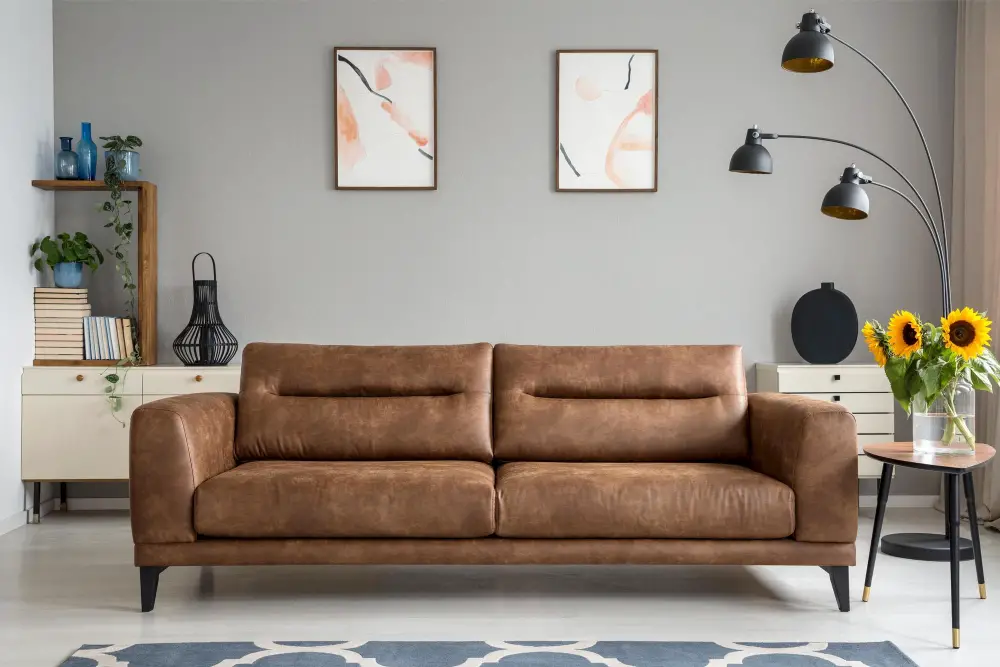
Different materials require different cleaning methods and products. Evaluating the material will help you determine if using a carpet cleaner is safe for your couch or not.
The most common types of materials used in making sofas are leather, microfiber, cotton blends, polyester blends and wool. Leather is durable but requires special care while microfiber can be cleaned easily with water-based solutions.
Cotton blend fabrics are soft and comfortable but may shrink when exposed to moisture while polyester blend fabrics resist stains well but may pill over time.
Woolen fabric has natural stain resistance properties due to its lanolin content; however it needs extra care during washing as it tends to shrink when washed in hot water or dried at high temperatures.
Carpet Cleaner Formulations
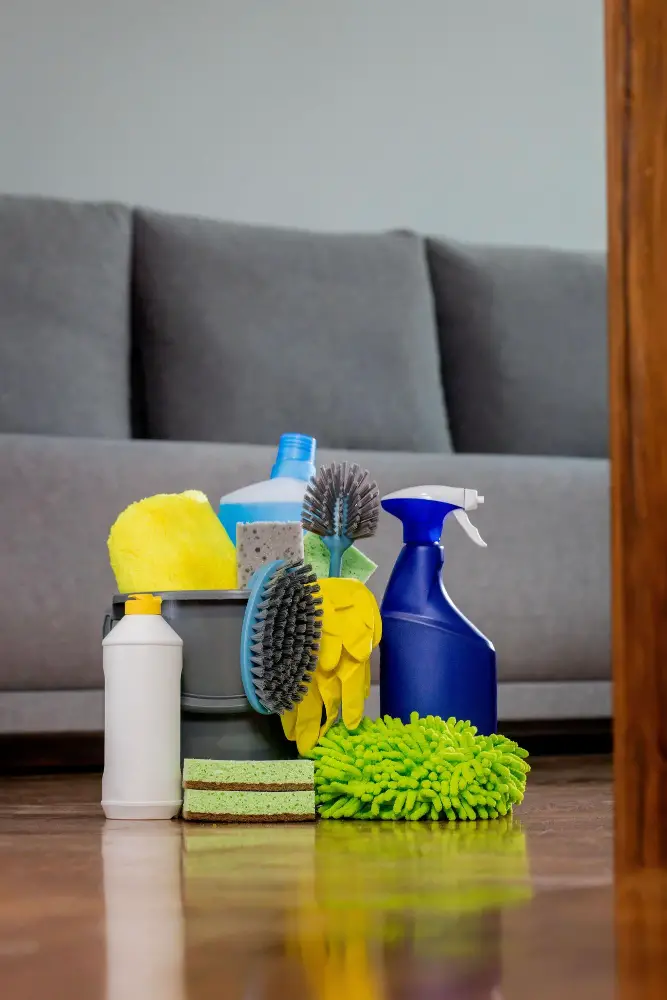
Not all carpet cleaners are created equal, and some may be too harsh for certain types of upholstery materials. Before you start cleaning your couch with a carpet cleaner, make sure you read the label carefully and check if it’s safe for use on upholstery.
There are different types of formulations available in the market such as foam-based cleaners or liquid sprays that can be used with handheld or upright machines. Some formulations contain enzymes that break down organic stains like pet urine while others have oxygenated bleach which is effective against tough stains like coffee spills.
It’s also essential to consider eco-friendly options when choosing a formulation since some chemicals can cause harm not only to your furniture but also pose health risks especially if there are children or pets around.
Selecting an appropriate formula is crucial when using a carpet cleaner on your couch.
Assessing Couch Stains

Not all stains are created equal and some may require a different approach than others. For example, pet urine or vomit will need a more thorough cleaning process compared to spilled coffee or juice.
It’s important to take note of how long the stain has been there as well. Fresh stains are easier to remove compared to those that have set in for days or weeks.
Another factor you should consider when assessing couch stains is their color and texture. Light-colored fabrics tend to show dirt and grime more easily while textured materials can trap dust and debris making them harder to clean.
Testing Carpet Cleaner Compatibility
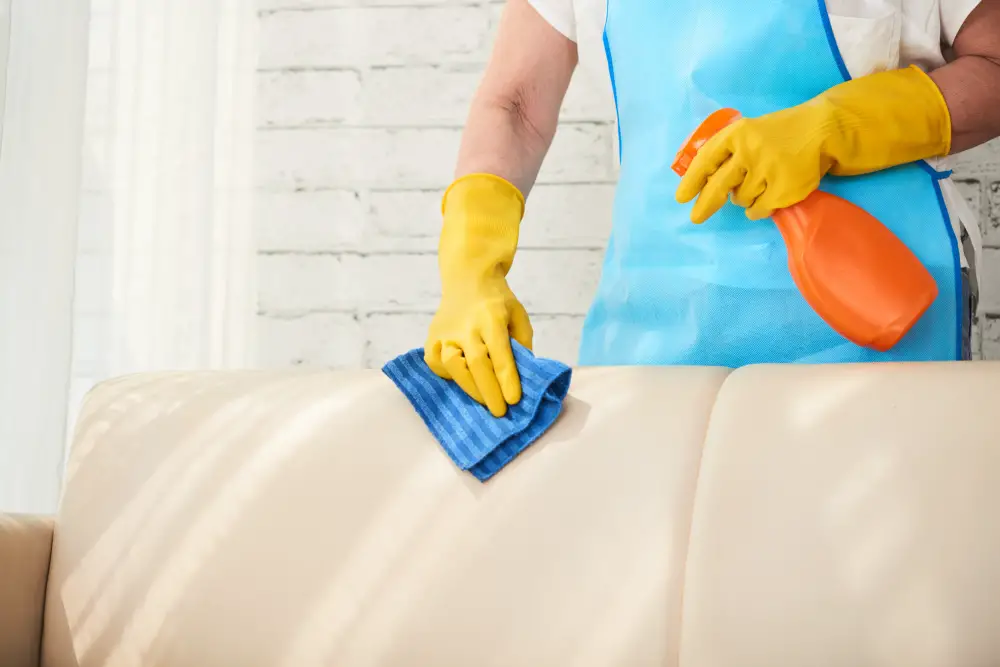
This will help you determine if the solution is safe for use on your couch material and prevent any potential damage or discoloration.
To perform a compatibility test, apply a small amount of carpet cleaner onto an unseen part of your couch such as under cushions or at the back. Leave it for about 10-15 minutes before blotting it up with a clean cloth.
Check if there are any changes in color or texture after drying.
If there are no adverse effects, then proceed to clean other areas using that particular carpet cleaner formulation. However, if you notice any discoloration or damage during testing, stop immediately and consider trying another cleaning solution that is compatible with your couch material.
Preparing Your Couch for Cleaning
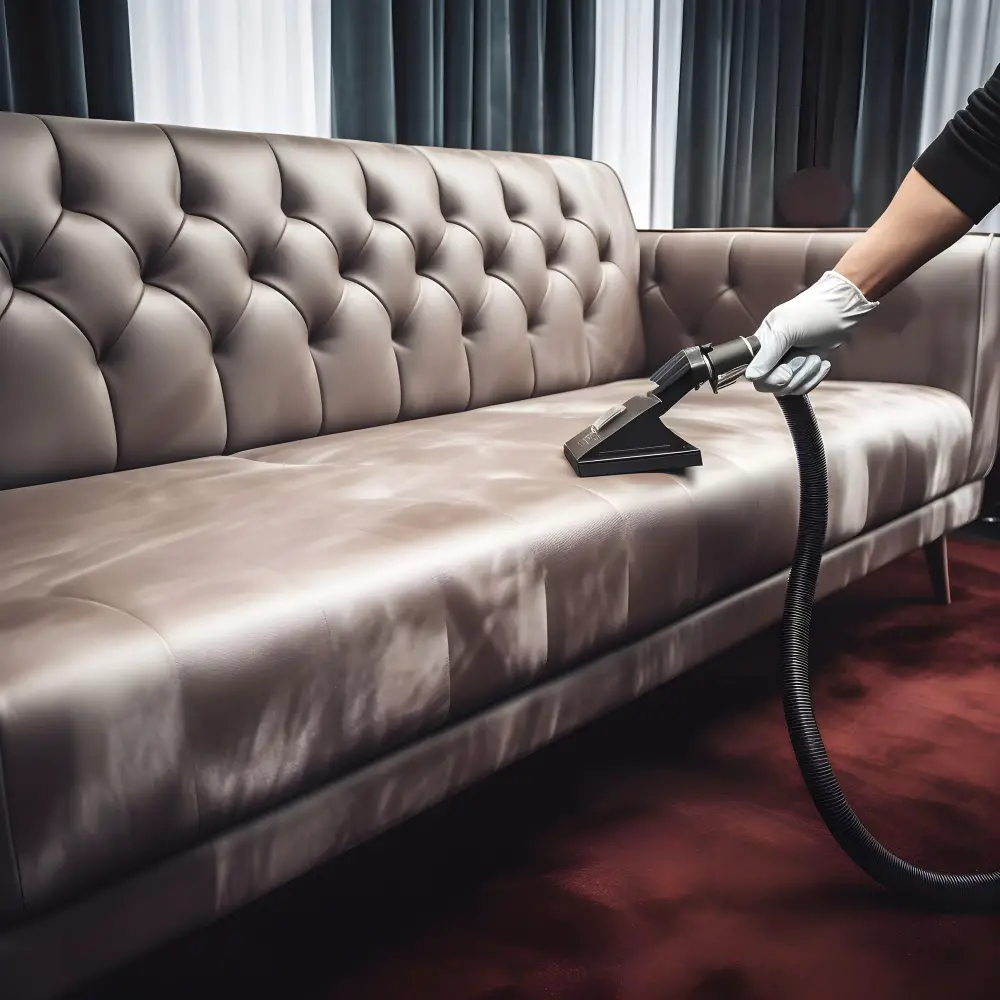
This will ensure that the cleaning process is effective and doesn’t cause any damage to your furniture. The first step in preparing your couch for cleaning is to remove any loose debris or dirt from the surface using a soft-bristled brush or vacuum cleaner.
Next, check for any stains on the couch and identify their type so that you can choose an appropriate carpet cleaner formulation. It’s also essential to read the manufacturer’s instructions before applying anything on your sofa as some materials may require specific care.
If there are removable cushions or covers, take them off and clean them separately according to their washing instructions. You should also test a small area of fabric with a bit of water before proceeding with carpet cleaners just in case there are adverse reactions such as discoloration.
Lastly, make sure that all zippers are closed tightly so no liquid seeps into cushion fillings which could lead unpleasant odors later on.
Find the Right Cleaning Solution
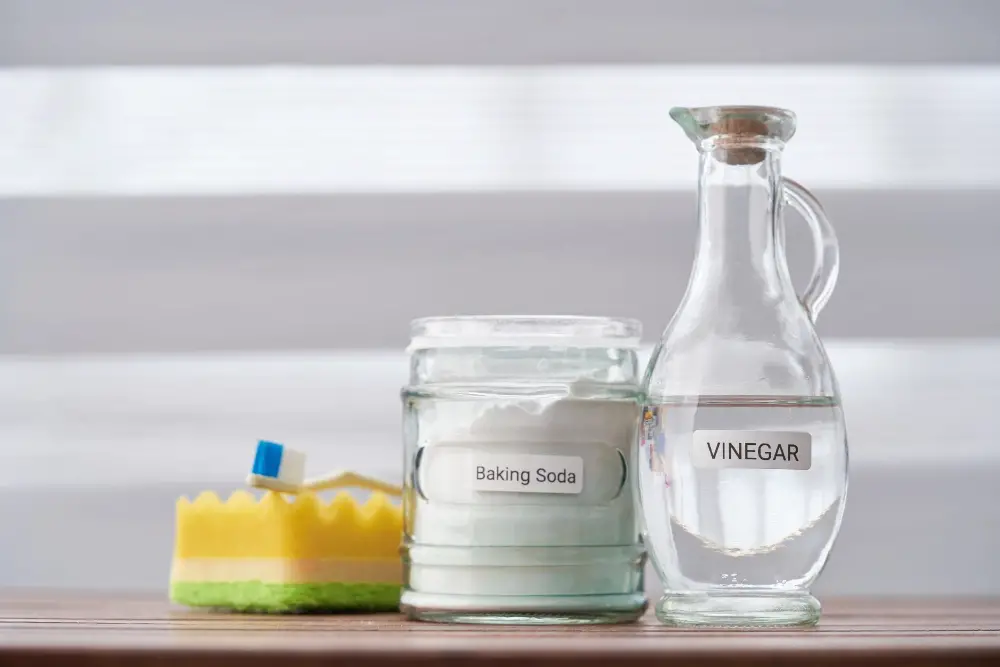
Not all carpet cleaners are created equal, and some may not be suitable for use on certain materials. For example, a cleaner that works well on fabric may damage leather or suede.
When selecting a cleaning solution for your couch, consider its ingredients carefully. Some solutions contain harsh chemicals that can cause discoloration or even damage to certain fabrics.
Look for products with natural ingredients like vinegar or baking soda if you prefer an eco-friendly option.
It’s also important to choose a product specifically designed for upholstery rather than just any carpet cleaner as they have different formulations tailored towards specific needs.
Handheld Vs Upright Carpet Cleaners for Couches
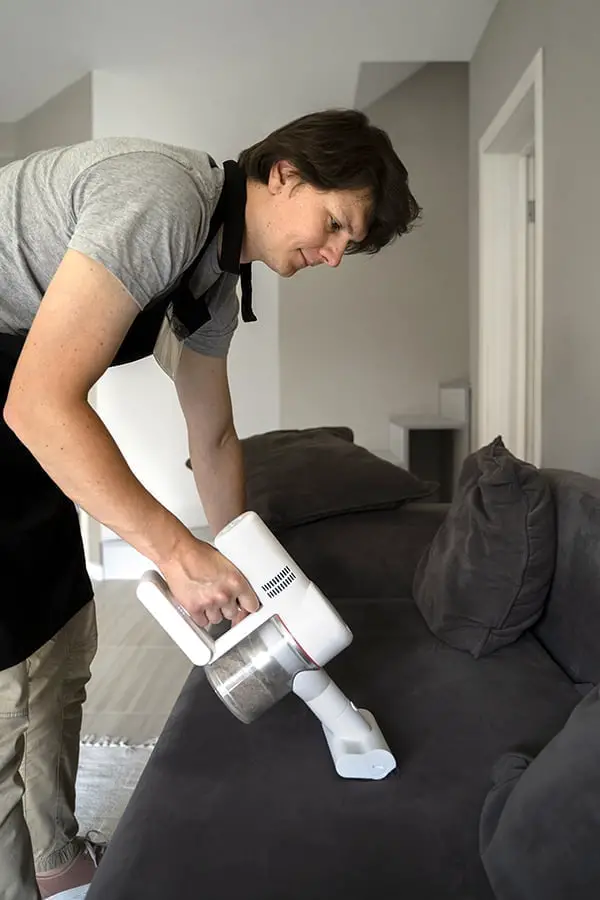
Handheld cleaners are smaller and more portable, making them ideal for spot-cleaning small areas of your couch. They’re also great for getting into tight spaces and hard-to-reach corners.
On the other hand, upright cleaners are larger and more powerful than their handheld counterparts. They’re designed to clean large areas quickly and efficiently, making them perfect for deep-cleaning an entire couch.
So which one should you choose? It really depends on your specific needs. If you only need to clean small spots on your couch occasionally, a handheld cleaner may be all you need.
However if there’s been significant staining or dirt buildup over time then an upright cleaner is likely the better option as they can handle larger surface area in less time.
Cleaning Techniques for Fabric Couches

One popular technique is using a steam cleaner with an upholstery attachment. This method involves filling the steam cleaner with water and detergent, then running it over the surface of your couch.
Another option is using a homemade cleaning solution made from equal parts vinegar and water or dish soap mixed with warm water. Apply this solution to any stains or dirty areas on your couch, let it sit for 10-15 minutes, then blot away excess moisture with a clean cloth.
For tough stains like ink or red wine, try applying rubbing alcohol directly onto the stain before wiping away gently in circular motions until removed.
Cleaning Techniques for Leather Couches
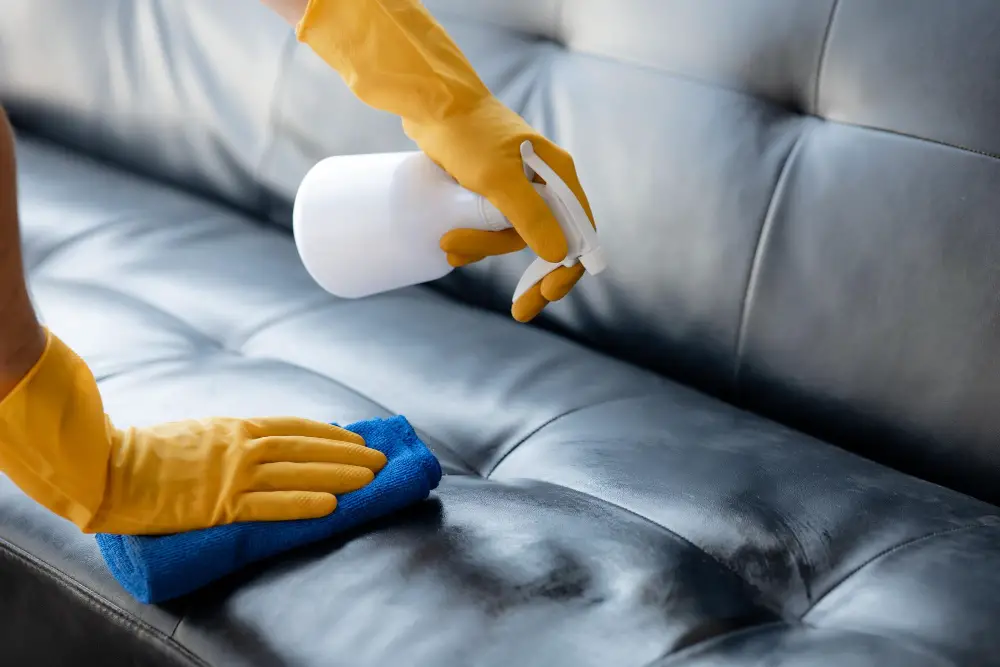
Using the wrong cleaning solution or technique can cause damage and discoloration. To clean your leather couch effectively, start by vacuuming up any loose dirt or debris with a soft brush attachment.
Next, mix together equal parts water and white vinegar in a spray bottle. Spray the solution onto a microfiber cloth and gently wipe down the entire surface of your leather couch.
Be sure not to saturate the leather with too much liquid as this can cause water stains.
For tougher stains like ink or oil-based spills, you may need to use an alcohol-based cleaner specifically designed for use on leather furniture. Apply this cleaner sparingly using another clean microfiber cloth.
After cleaning your leather sofa thoroughly, apply some conditioner made specifically for treating genuine leathers; it will help keep them supple while preventing cracking over time due to dryness.
Spot Cleaning Vs. Deep Cleaning
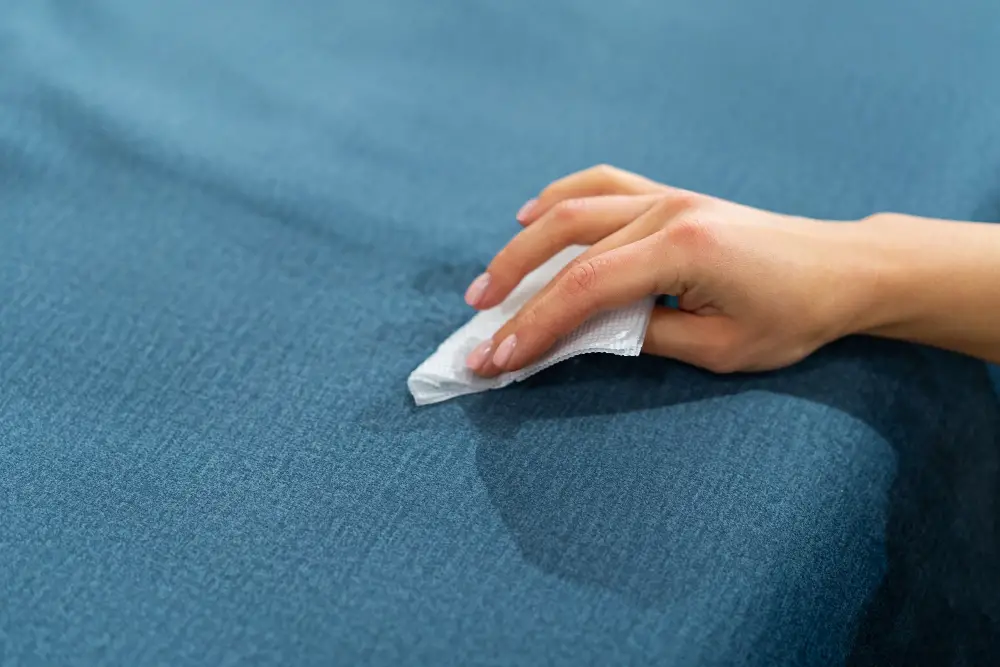
Spot cleaning is ideal for dealing with small stains or spills that have just occurred. It involves using a targeted cleaner on the affected area and gently blotting until the stain disappears.
Deep cleaning, on the other hand, is a more thorough approach that’s best suited for larger stains or dirt buildup over time. This method requires using a carpet cleaner machine to apply water and detergent solution onto your couch fabric before extracting it back out along with any dirt particles.
While spot-cleaning can be effective in removing minor blemishes from your couch surface quickly, deep-cleaning provides an overall better result by eliminating all accumulated grime from every corner of your furniture piece.
How to Use a Portable Carpet Cleaner On Couch
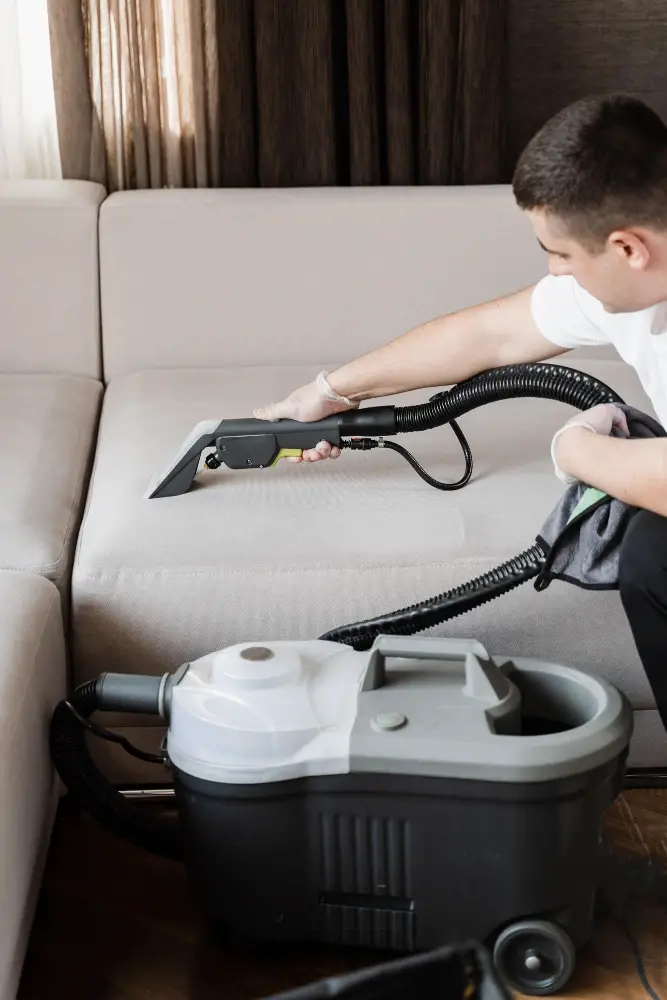
First, make sure that your couch is free of any debris or loose dirt by vacuuming it thoroughly. Next, fill the water tank of your portable carpet cleaner with hot water and add the recommended amount of cleaning solution.
Before using the machine on your couch, test it out in an inconspicuous area first to check for compatibility and avoid any potential damage. Once you’re ready to start cleaning, work in small sections at a time and apply gentle pressure while moving back and forth over each section.
Be careful not to oversaturate the fabric as this can lead to longer drying times or even mold growth if left untreated. After finishing each section, go over it again with just hot water from the machine’s tank without adding more cleaning solution.
Once all sections have been cleaned thoroughly using these techniques let them dry completely before sitting on them again.
Tips for Effective Couch Cleaning
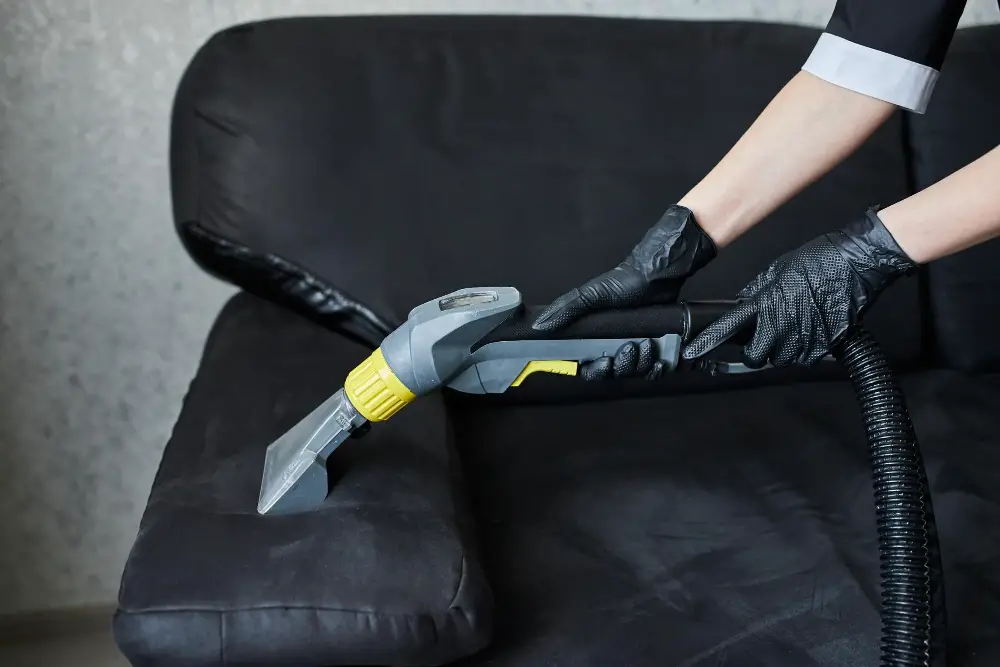
First and foremost, always read the instructions on the carpet cleaner bottle before using it on your couch. Different cleaners may have different dilution ratios or application methods.
Next, start by vacuuming your couch thoroughly to remove any loose dirt or debris. This will make the cleaning process more effective and prevent any dirt from getting ground into the fabric during cleaning.
When applying the carpet cleaner solution onto your couch, be sure not to oversaturate it as this can cause damage or discoloration of certain fabrics. Use a clean cloth or sponge to apply an even layer of solution onto each section of your sofa.
For tough stains like red wine spills or pet urine stains, consider using a specialized stain remover product designed specifically for those types of messes before proceeding with general cleaning.
After you’ve finished applying and scrubbing in the solution onto all sections of your sofa according to manufacturer instructions – let it sit for at least 15 minutes (or longer if recommended) so that all areas can absorb properly then rinse off with water until no suds remain.
Drying and Ventilating the Couch

This will help prevent any mold or mildew from forming on the damp surface. Start by using a clean towel to blot up as much moisture as possible from the couch.
Then, open windows and turn on fans in the room to increase air circulation.
If you have access to a dehumidifier, use it in conjunction with fans for faster drying time. Be sure not to place any cushions back onto the couch until they are completely dry; otherwise, they may develop an unpleasant odor or even mold growth.
Avoid exposing your newly cleaned couch directly under sunlight or heat sources such as radiators since this can cause discoloration of certain materials like leather and fabric upholstery.
Safety Precautions When Using Carpet Cleaners On Couches
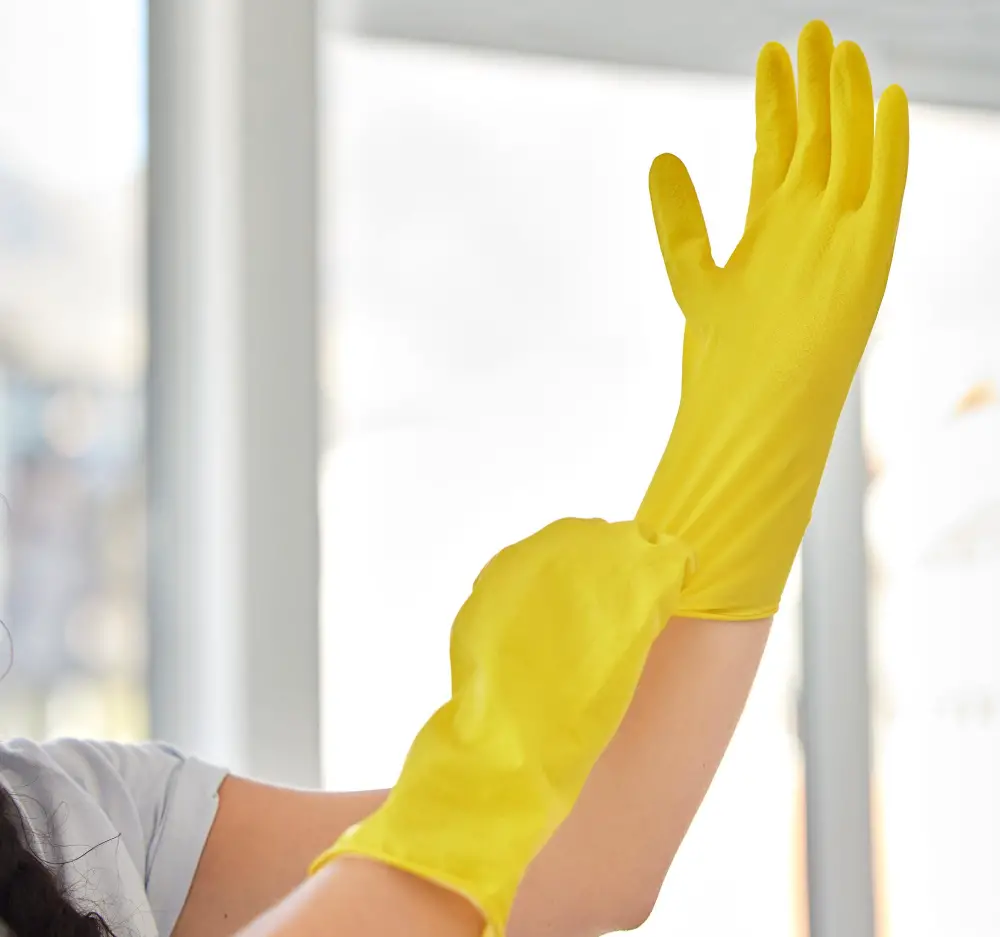
First and foremost, make sure the room is well-ventilated by opening windows or turning on a fan. This will help prevent any fumes from building up in the room.
Always wear gloves when handling carpet cleaner to protect your skin from any potential irritation or chemical burns. It’s also a good idea to wear old clothes that you don’t mind getting dirty in case of any spills.
When using an upright carpet cleaner on your couch, be mindful of its weight and size as it can be difficult to maneuver around furniture without causing damage. If possible, enlist the help of another person for assistance.
Never mix different types of cleaners together as this can create dangerous chemical reactions that could harm both you and your couch. Always follow manufacturer instructions carefully and use only recommended amounts for safe usage.
Maintaining Couch Cleanliness
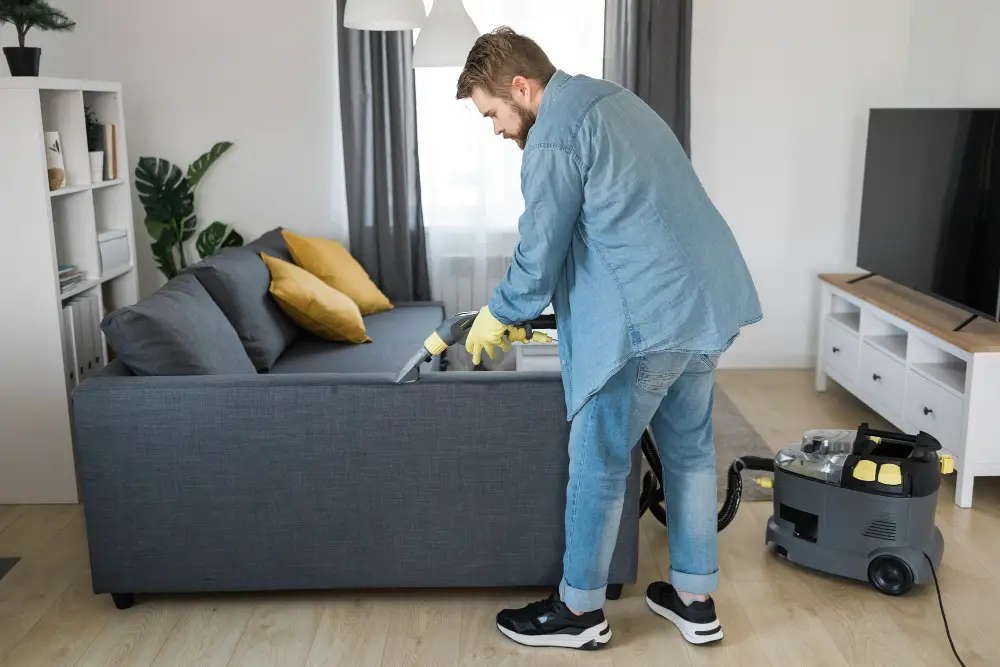
Here are some tips for keeping your couch looking and smelling fresh:
1. Vacuum regularly: Use a vacuum cleaner with an upholstery attachment to remove dust, dirt, and pet hair from the surface of the couch.
2. Avoid eating on the couch: Eating on the couch can lead to spills and stains that are difficult to remove.
3. Keep pets off of it: If possible, train your pets not to jump or lie down on the furniture as their fur can accumulate over time leading unpleasant odors.
4. Rotate cushions frequently: Rotating cushions helps distribute wear evenly across all parts of them so they don’t become lumpy in one spot only.
5. Use slipcovers or throws if necessary – Slipcovers protect against spills while adding a decorative touch; throws add warmth without compromising cleanliness.
DIY Alternatives for Couch Cleaning
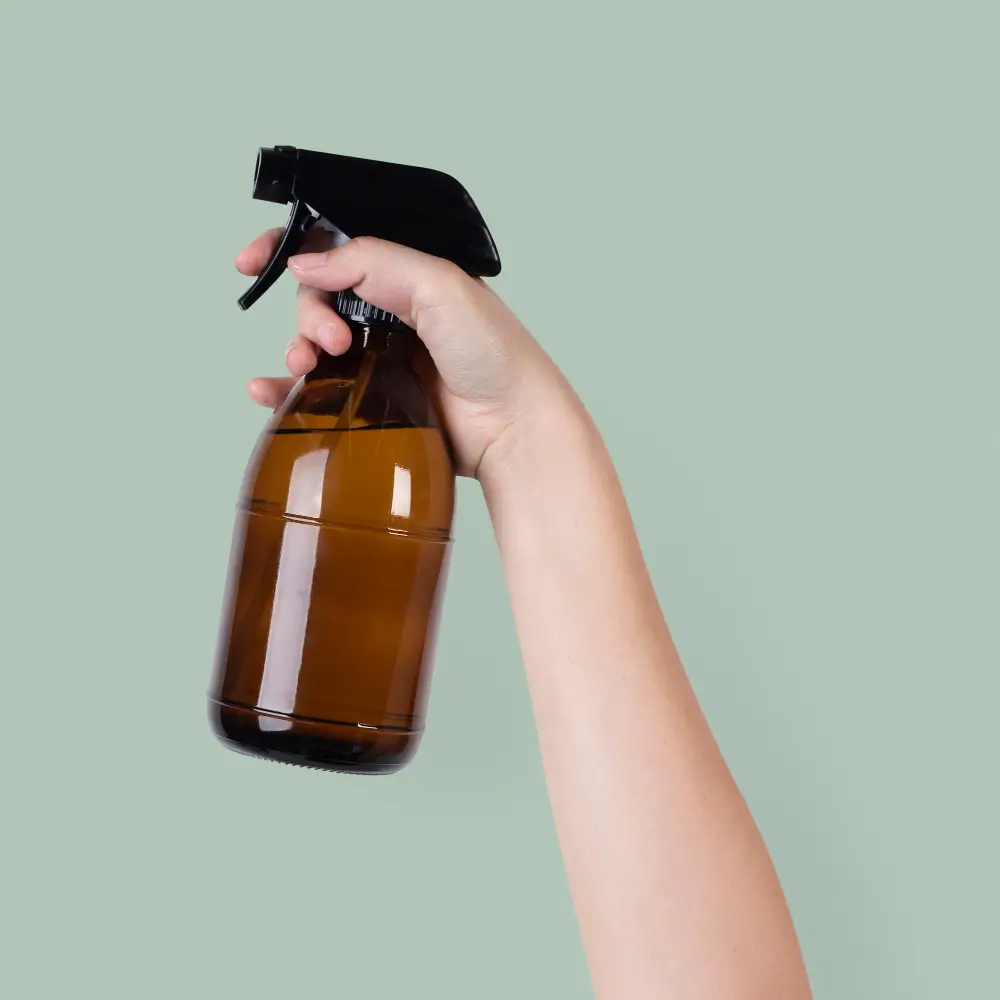
One popular method is using baking soda and vinegar. Simply sprinkle baking soda over the stained area and let it sit for 15-20 minutes before vacuuming it up.
Then mix equal parts water and white vinegar in a spray bottle, apply to the stain, and blot with a clean cloth until the stain disappears.
Another option is using club soda or seltzer water on stains caused by red wine or coffee spills. Pour some onto the affected area, let it bubble up for a few seconds then blot with paper towels until dry.
For leather couches specifically, you can make your own cleaner by mixing equal parts of olive oil and white vinegar in a spray bottle. Spray onto your leather couch sparingly (too much moisture could damage leather) then wipe down gently with microfiber cloth.
Professional Couch Cleaning Services
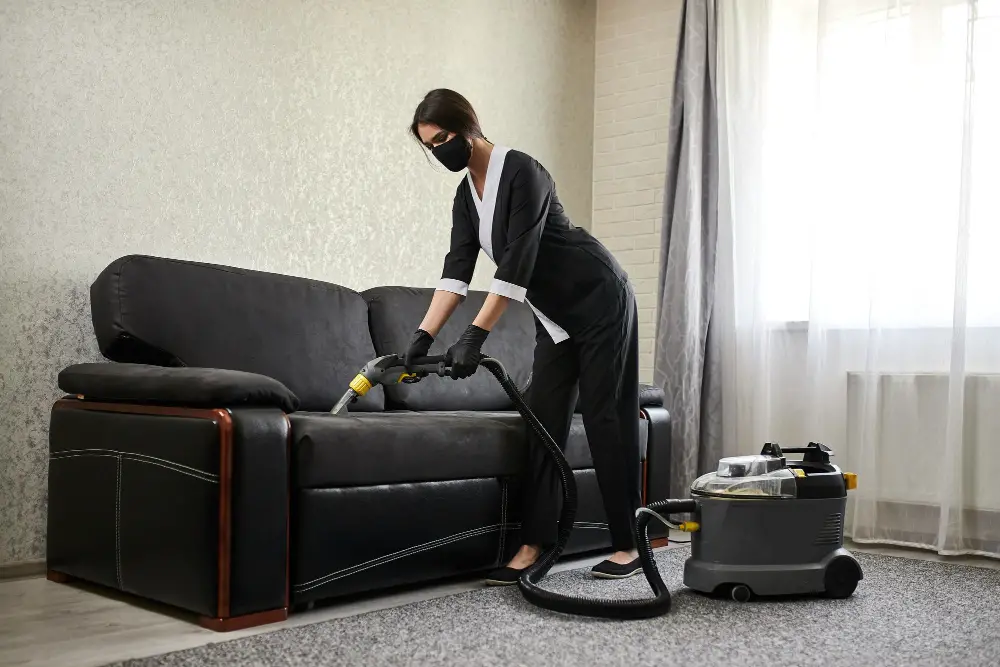
Professional couch cleaning services have specialized equipment and expertise that can help restore your couch’s appearance and extend its lifespan.
When choosing a professional service, make sure they have experience with cleaning the type of material on your couch. They should also use safe and effective cleaning solutions that won’t damage or discolor the fabric.
Professional cleaners will typically start by assessing any stains or areas of heavy soiling before applying their chosen method for deep-cleaning. This could involve steam-cleaning, dry-cleaning, foam extraction among others depending on what is best suited for each specific case.
FAQ
Is carpet cleaner the same as upholstery cleaner?
No, carpet cleaner is not the same as upholstery cleaner, as they are designed to treat different materials, with carpet being made of synthetic fibers and upholstery being woven from various materials.
Can I use Bissell carpet cleaner on my couch?
Yes, you can use a Bissell carpet cleaner on your couch, especially with the proper attachments.
How do you use a carpet cleaner on furniture?
To use a carpet cleaner on furniture, remove the cushions, spray the formula onto the upholstery in a steady motion, and then vacuum the solution and stains by moving the cleaner back and forth over the area.
Are there any specific carpet cleaner brands that are safe for use on couches?
Some carpet cleaner brands safe for use on couches include Bissell, Hoover, and Rug Doctor.
What precautions should be taken when using a carpet cleaner on upholstery to avoid damage?
When using a carpet cleaner on upholstery to avoid damage, always test on a hidden area, use appropriate attachments, and follow the manufacturer’s instructions.
Can natural or homemade carpet cleaner solutions be used on couch materials?
Yes, natural or homemade carpet cleaner solutions can be used on couch materials as they are generally safe and gentle on various fabric types.




